
공식적으로는 미국의 개와 고양이 대부분이 뚱뚱합니다. 음, 과체중 또는 비만입니다. 차이점은 초과 체지방의 양에 있습니다. 반려동물의 체중이 이상적 체중보다 20% 이상 높으면 공식 비만 진단이 내려집니다. 애완 동물 비만 예방 협회(Association for Pet Obesity Prevention)가 2018년에 수행한 가장 최근의 연례 연구에 따르면 미국 개 55.8%와 고양이 59.5%가 과체중 또는 비만이라고 보고했습니다. 미국 애완동물이 과체중이 되는 것은 너무나 흔한 일이기 때문에 '뚱뚱한 고양이'라는 정치적 이미지를 통해 우리 문화에 뿌리를 내리고 있습니다.
동물의 미쉐린 맨 주름이 어떤 사람들에게는 사랑스러울 수 있지만 이 여분의 파운드는 애완 동물의 건강과 복지에 극도의 영향을 미칠 수 있습니다. 2014년에 한 캐나다 여성이 수의사의 경고에도 불구하고 고양이 나폴레옹이 25파운드에 달하는 것을 허용한 후 동물 학대 혐의로 기소되었습니다. 몸단장을 할 수 없었기 때문에 나폴레옹은 치료가 불가능한 것으로 판명된 고통스럽고 광범위한 피부 자극을 일으켰습니다. 안락사는 가장 인도적인 옵션으로 간주되었습니다.
애완 동물이 비만인지 확인하는 몇 가지 빠른 방법은 갈비뼈를 만져보고 위에서 아래로 애완 동물을 보는 것입니다. 애완 동물의 갈비뼈가 느껴지지 않고 아래를 내려다 볼 때 허리가 보이지 않으면 수의사를 방문하여 더 공식적인 체중을 재야 합니다. 다행히도 비만은 되돌릴 수 있습니다. 식단, 운동 및 전반적인 생활 방식의 변화는 애완 동물이 체중을 줄이는 데 도움이 될 수 있습니다. 너무 늦기 전에 반려동물이 행복하고 건강한 체중을 유지할 수 있도록 지금 조치를 취하십시오.
공정하게 말하면 Bulldogs와 같은 일부 개 품종은 자연적으로 둥그스름합니다. 이러한 뚱뚱한 품종의 경우 체중에 대한 품종 표준을 고려하고 개가 비만이라고 자동으로 결론을 내리기 전에 수의사에게 문의하십시오.
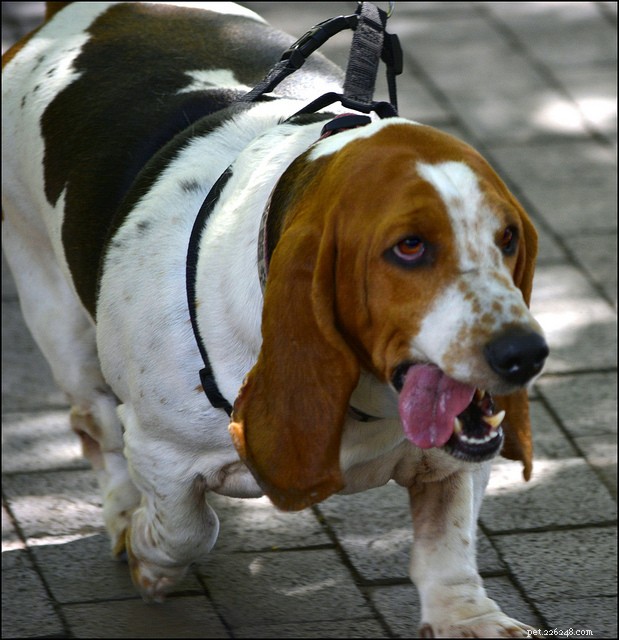
뚱뚱한 반려동물에게 가장 큰 장애물은 체중 증가입니다. 동물은 외부에서 크기가 증가하지만 심장과 같은 내부 장기는 더 커지지 않으며 이 더 큰 몸을 유지하기 위해 더 열심히 일해야 합니다. 과로한 심장은 더 빨리 펌프질하지만 신체의 순환 요구에 보조를 맞출 수 없어 울혈성 심부전으로 이어집니다. 울혈성 심부전은 한동안 관리할 수 있습니다. 하지만 결국에는 심장이 마비되어 영향을 받은 애완동물을 죽음에 이르게 할 것입니다.
기침은 애완동물의 심장 질환의 예상치 못한 중요한 징후이며 폐를 압박하는 비대해진 심장으로 인해 발생합니다. (심장사상충의 증상이기도 합니다!) 같은 이유로 호흡곤란이나 운동을 피하는 것도 심장병을 나타낼 수 있습니다. 불량한 산소 흐름은 푸른빛이 도는 잇몸이나 혀에서 볼 수 있을 뿐만 아니라 실신할 수도 있습니다. 상태가 진행됨에 따라 복부 팽창이 발생하며, 이는 체액 축적의 결과입니다.
심장병이 있는 반려동물의 치료 및 예후는 중증도와 질병 유형에 따라 다릅니다. 대부분의 의학적 상태와 마찬가지로 일찍 잡히면 개나 고양이가 생존할 확률이 높아집니다.
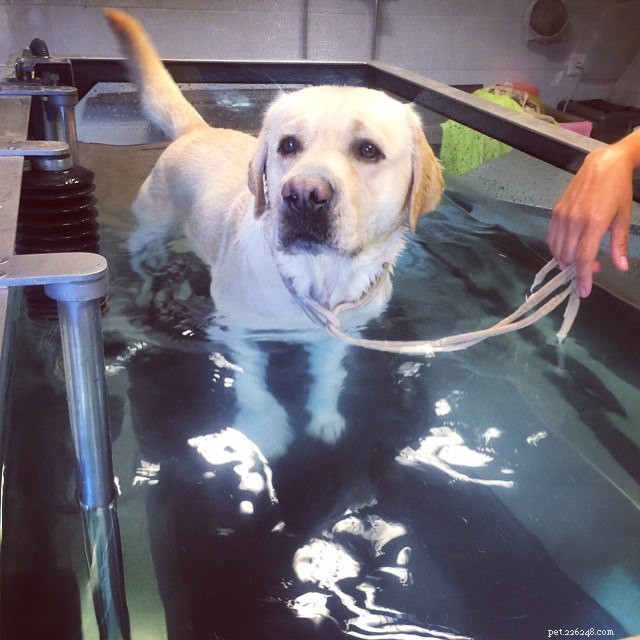
비만 애완동물은 여러 가지 면에서 압박을 받고 있습니다. 그 모든 여분의 조직은 관절과 인대에 큰 부담을 주어 부상과 퇴행성 질환의 위험을 높입니다. 노령견과 고양이는 연골이 이미 나이가 들어서 약해지기 때문에 관절 질환에 특히 취약합니다. 골관절염은 관절 내에서 고통스러운 뼈 대 뼈 접촉을 초래하는 연골 감소로 인해 발생하는 이러한 상태 중 하나입니다. 애완동물에게 극심한 고통을 주는 관절염은 치료할 수 없지만 수술, 약물 치료, 물리 치료를 함께 사용하면 관리할 수 있습니다.
또 다른 퇴행성 관절 질환인 고관절 이형성증은 유전적입니다. 저먼 셰퍼드 및 래브라도 리트리버와 같은 대형견은 유전적으로 이 상태가 발생할 위험이 더 높습니다. 고관절 이형성증에서는 골반 뼈와 대퇴골(허벅지 뼈)을 연결하는 고관절의 볼-앤드-소켓 관절이 기형의 결과로 적합하지 않습니다. 비만하고 유전적으로 고관절 이형성증에 걸리기 쉬운 경향이 있는 것은 이 관절 질환에 대한 이중의 해법과 같습니다. 반려동물을 키우는 부모는 고관절 이형성증을 예방할 수 없지만 건강한 체중 유지를 포함한 생활 습관 관리를 통해 심각성과 진행을 줄일 수 있습니다.
무릎을 안정시키는 데 도움이 되는 전방 결정 인대(ACL)는 또한 과중한 부담으로 인해 비만인 개와 고양이의 외상성 부상에 취약합니다.
소형견에서 흔히 볼 수 있는 추간판 질환(IVDD)은 척추의 충격을 흡수하는 디스크가 척수에서 압착되거나 터져 척수와 척수 신경을 압박하는 고통스러운 압박을 유발할 때 발생합니다. IVDD는 낙상, 유전적 소인과 같은 외상 또는 비만의 추가 압력으로 인해 발생할 수 있습니다.
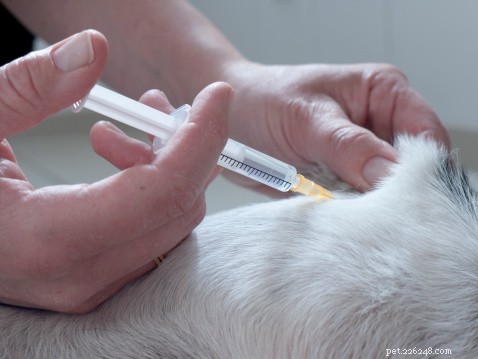
뚱뚱한 개와 고양이의 몸은 혈당(당) 수치를 억제하는 호르몬인 인슐린에 제대로 반응하지 못합니다. 과도한 지방은 세포가 인슐린에 내성을 갖게 하여 혈당 수치를 높입니다. The pancreas continuously pumps out insulin to counteract high blood sugar levels, but to no avail, resulting in diabetes mellitus (type 2 diabetes), commonly known as insulin-resistant or “sugar” diabetes.
This is different from type 1 diabetes, which is present at birth and is the result of the pancreas’s inability to produce insulin. In general, cats are more prone to type 2 diabetes. Dogs are more likely to get type 1 diabetes, but can develop type 2 diabetes if they’re obese.
Symptoms of diabetes in dogs and cats include excessive thirst and urination, decreased appetite, weight loss, lethargy and vomiting. Depression can even result in some pets if diabetes is left untreated, as can cataracts and kidney disease. A prescription diet and insulin are typically required as part of diabetes management to keep blood sugar levels in the normal range.
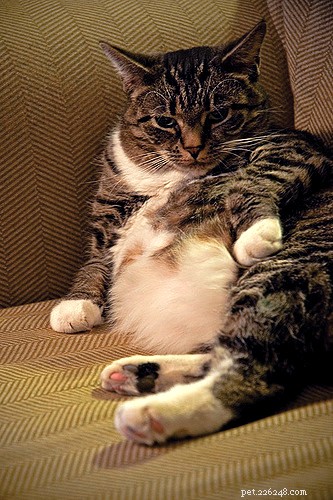
The effects of obesity in pets are far-reaching and impact every part of a dog or cat’s life. Exercise becomes difficult and breathing labored as lung capacity decreases and the diaphragm is pressured by excess fat. The bigger the body, the more oxygen it needs, placing the lungs under increased demand. Brachycephalic, or flat-faced, breeds – such as Pugs, Persians and French Bulldogs – may find breathing restricted even more with weight gain.
Poor body temperature regulation is another rarely-considered side effect of obesity. Overweight pets are less capable of regulating their internal conditions because of their layer of insulating tissue. Constantly warm, this places overweight pets at an increased risk of developing heat stroke in the summer. Conversely, in the winter they may also struggle due to decreased circulation, making frostbite or hypothermia a possibility.
It’s the little things that really affect a pet’s quality of life. Fat dogs and cats are less flexible and can’t maneuver themselves for full-body grooming, which can lead to skin and coat issues. If not properly distributed, the fur’s natural oils accumulate and cause fur matting or painful sores. An unhealthy, high-fat diet can contribute to coat troubles but also to gastrointestinal discomfort and flatulence – unpleasant for everyone involved.
Studies in both humans and animals have demonstrated that obesity leads to reduced immune function, making individuals more susceptible to infection. The Obesity Action Coalition posits this is due to poor diet and lack of exercise and even theorizes that obesity might make vaccines less effective. If your pet is constantly sick with the common cold or other infections, talk to your vet about strengthening your pet’s immune system while you tackle shedding pounds with your pet.
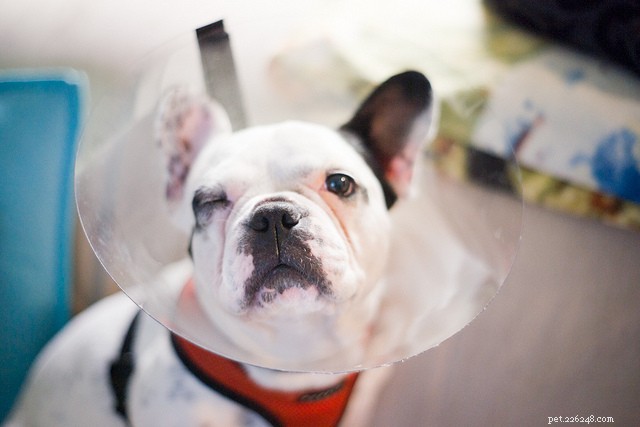
All of the previously discussed risks for obese pets are heightened when it’s time to go under the knife. Cardiovascular and respiratory systems are already stressed from supplying super-sized systems; introducing anesthesia as an extra stressor places obese pets at an increased risk during surgery. Anesthesia is metabolized through the body’s fat stores; because of this, obese pets are more difficult to dose and take longer to wake up afterwards. Often vets are forced to tell pet parents that the risk of surgery is higher than the medical condition itself, thanks to the animal’s extreme weight. Additional anesthesia, as well as extra staff to monitor an obese pet, can also drive up the cost of common surgeries for pet parents.
Increased fatty tissue lengthens pets’ time spent on the table. Also, layers of fat obscure the intended surgical site – say, the bladder – making the procedure more technically difficult.
Taken together, obesity worsens pre-existing medical conditions, making a pet’s prognosis less positive. For example, age-related arthritis is common and easily manageable, but can be even more painful because of obesity. This, in turn, increases the difficulty of weight loss and further compounds pets’ health issues.
If your pet is obese, be proactive about helping them lose weight and maintain that weight loss. Your veterinarian can help you come up with the ideal weight loss plan for your pet to improve your pet’s life.
The content is not intended to be a substitute for professional veterinarian advice, diagnosis, or treatment. Always seek the advice of your veterinarian or other qualified health provider with any questions you may have regarding a medical diagnosis, condition, or treatment options.
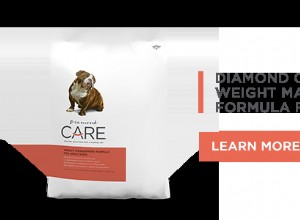
애완 동물 비만 예방 협회(Association for Pet Obesity Prevention)에 따르면 과체중 및 비만 미국 개 수는 2018년까지 계속 증가했습니다. 협회의 가장 최근 연례 임상 조사에서 수의사들이 본 개 중 56%가 과체중 또는 비만으로 분류되었습니다. 조사 첫 해인 2015년 개 53.8%, 2007년 개 43%와 비교됩니다. 이는 비만을 반려동물에게 가장 큰 건강 위협이 되며 덩치 큰 강아지가 새로운 표준이 되었음을 의미합니다. VeterinaryPracticeNews.com에 따르면 일부 수의사들은

노련한 개 주인이든, 새 주인이든 지망생이든 관계없이 애완 동물을 깨끗하고 건강하며 행복하게 유지하는 것이 중요합니다. 경험이 많거나, 새 주인이거나, 개 주인을 꿈꾸는 사람이든 간에 애완 동물을 깨끗하고 건강하며 행복하게 유지하는 것이 중요합니다. 그러나 개는 말로 자신을 표현할 수 없기 때문에 대부분의 애완 동물은 주인도 모르게 스트레스를 받습니다. 따라서 강아지가 아프기 전에 바닥을 모두 덮어서 보호하는 것이 중요합니다. 1) 적절한 수유 적절한 영양은 모든 동물의 성장에 필수적입니다. 개가 즐길 수 있는 균형 잡힌 식